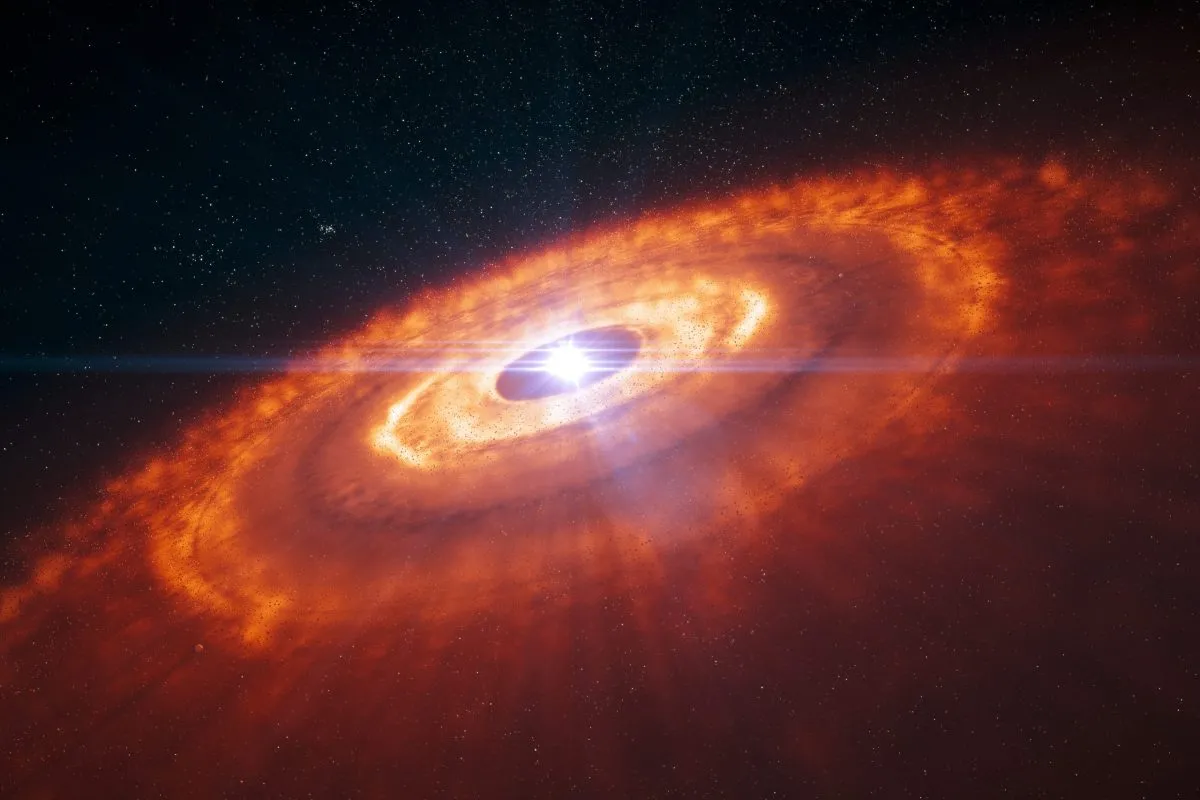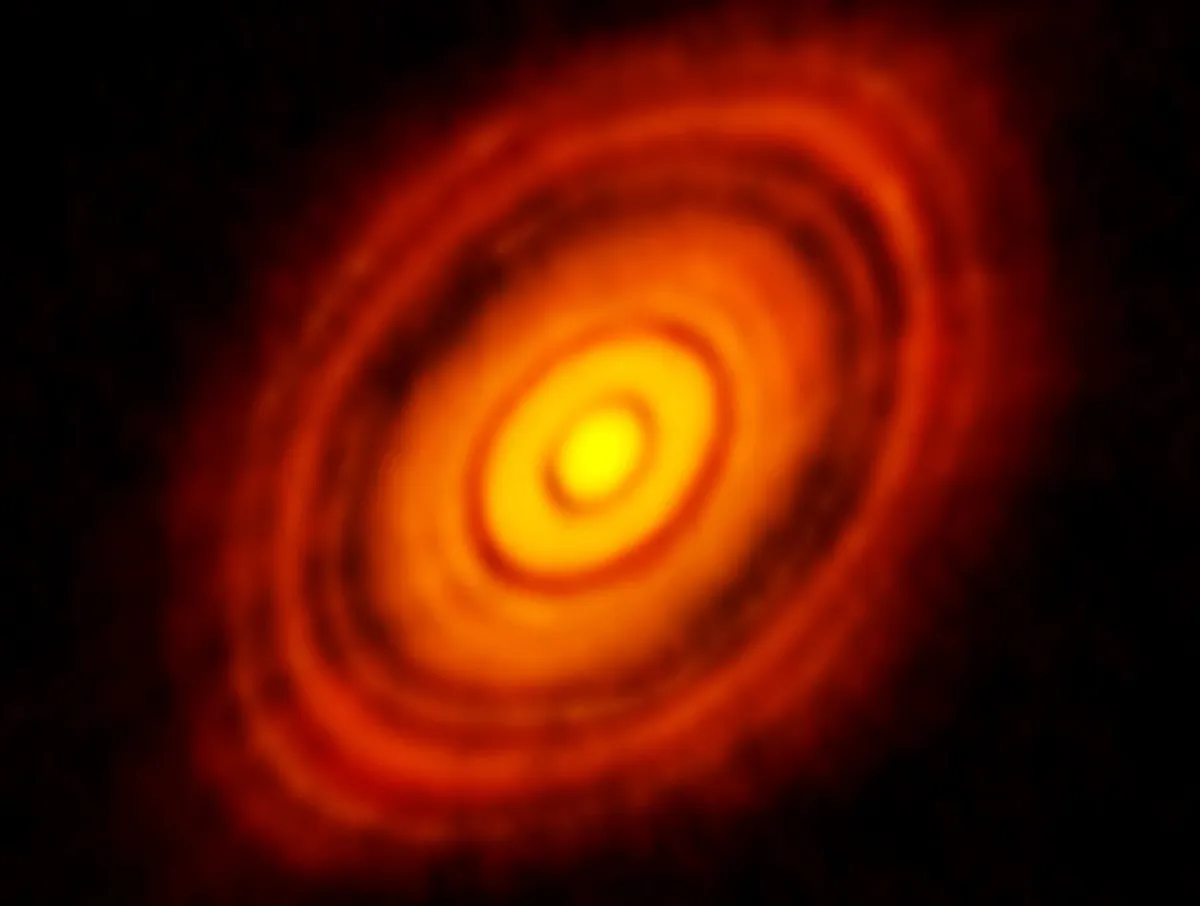The Sun burst into life around 4.6 billion years ago, which makes it the same age as the Solar System as a whole and around half a billion years older than the Earth.
That’s because, with a few exceptions, planetary systems such as our own Solar System do generally form at the same time.
Discover the biggest questions about the Sun, how many Earths can fit in the Sun and what will happen when the Sun dies
How planetary systems form

The formation of stars and planets is a long and complicated process with many different variables at play.
But in the simplest terms, you start with a big cloud of dust and gas in space.
Over millions and millions of years, gravity causes particles within this cloud to gather together in the centre.
And as they do so, both pressure and temperature start to build up – the latter mostly the result of friction between colliding or abrading particles.
Eventually, the once loosely-assembled cloud will have flattened out into a disc with a hot, dense clump of matter in the centre.
If that clump of matter gets hot and dense enough, nuclear fusion will start to occur, and a star will be born.

Remaining matter in the disc’s outer regions will then clump together to form planets, and any remaining matter around THEM will likely clump together to form moons.
Which is why the Solar System is the same age as the Sun and only a little bit older than the Earth.
Just as you, as Jonathan Swift famously put it, are “as old as your tongue and a little bit older than your teeth”!
Do note, however, that this nice simple mechanism – the nebular hypothesis, first described in the late 18th Century by Immanuel Kant, among others – doesn’t account for the distribution of every star and planet in the Universe.
As planetary systems age, planets on their outer fringes can drift off into interstellar space to wander as rogue planets or, in some cases, be captured by the gravity of a different system altogether.
